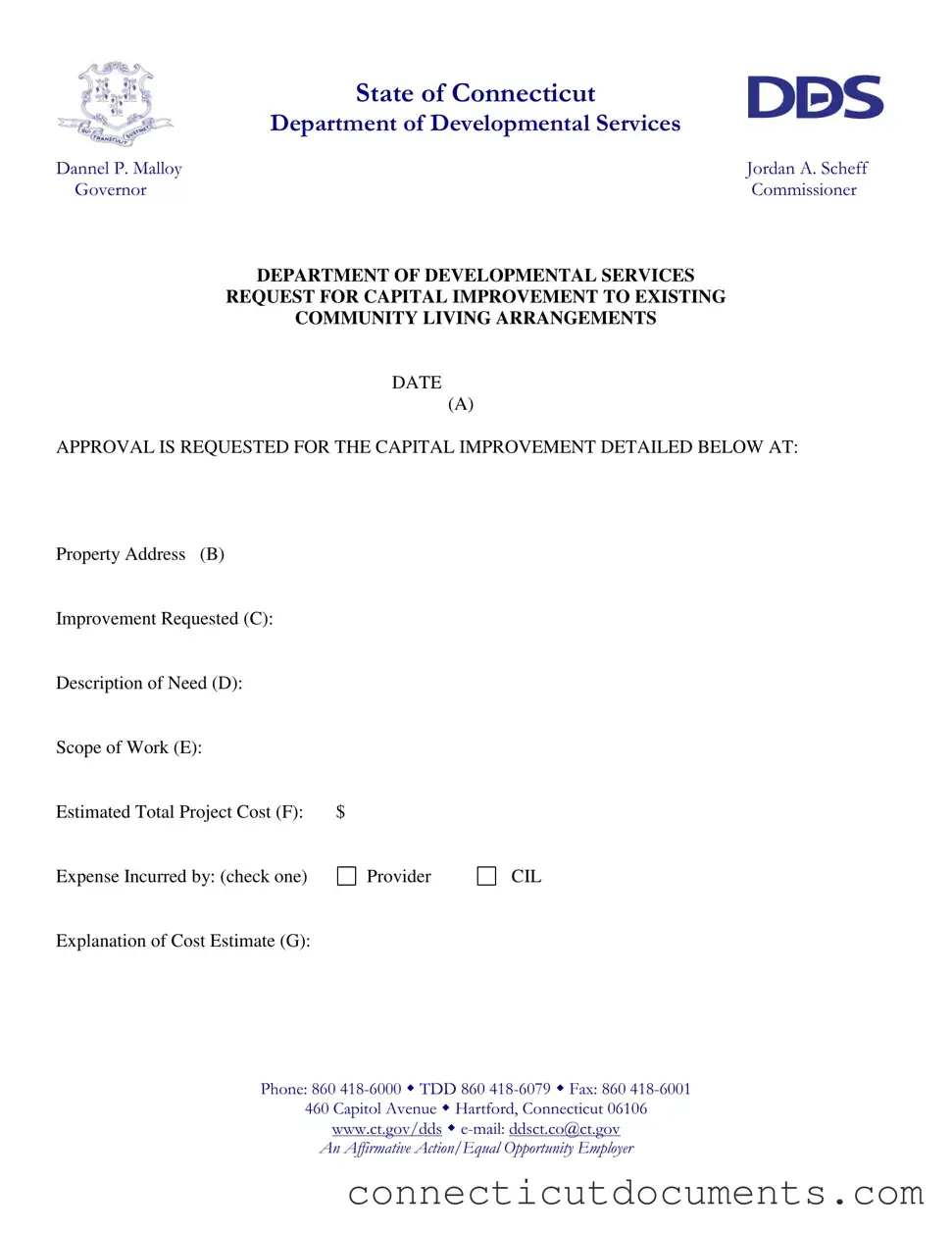What is the Connecticut Capital Improvement form?
The Connecticut Capital Improvement form is a document used by the Department of Developmental Services (DDS) to request funding for improvements to existing community living arrangements. It outlines the specific improvements needed, the estimated costs, and the justification for the project. This form is essential for ensuring that necessary upgrades are made to enhance the safety and well-being of residents.
Who can submit the Capital Improvement form?
The form can be submitted by private residential providers or property developers who manage community living arrangements. These individuals or organizations are responsible for ensuring that the living conditions meet the required standards for health and safety.
What information is required on the form?
The form requires several key pieces of information, including the property address, a description of the requested improvement, the scope of work, and an estimated total project cost. Additionally, the form asks for details about the provider and any expenses incurred. This comprehensive information helps the DDS evaluate the request effectively.
How is the estimated project cost determined?
The estimated project cost should be based on a detailed cost analysis that includes materials, labor, and any other expenses associated with the improvement. Providers often need to gather quotes from contractors to provide an accurate estimate. This ensures that the DDS can assess the financial feasibility of the proposed project.
What happens after the form is submitted?
Once the form is submitted, it undergoes a review process. The regional director and other authorized designees evaluate the request to determine if it meets the criteria for approval. If approved, the project can proceed, and funding may be allocated according to state regulations.
Are there any bidding requirements associated with the form?
Yes, the form includes a bid summary section where providers must outline the bidding process. Typically, providers are expected to solicit bids from at least three contractors. If this is not possible, they must justify the reason for not following the standard bidding process, such as urgency or difficulty in obtaining bids.
What if the lowest bid is not selected?
If a provider chooses not to select the lowest bid, they must provide a justification for their decision. This explanation is crucial for transparency and accountability, ensuring that the selection process is fair and justifiable.
Is approval guaranteed once the form is submitted?
Approval is not guaranteed. The DDS carefully reviews each request based on its merits, including the necessity for health and safety improvements. Only projects deemed essential will receive approval, as indicated by the signatures of the relevant authorities on the form.
